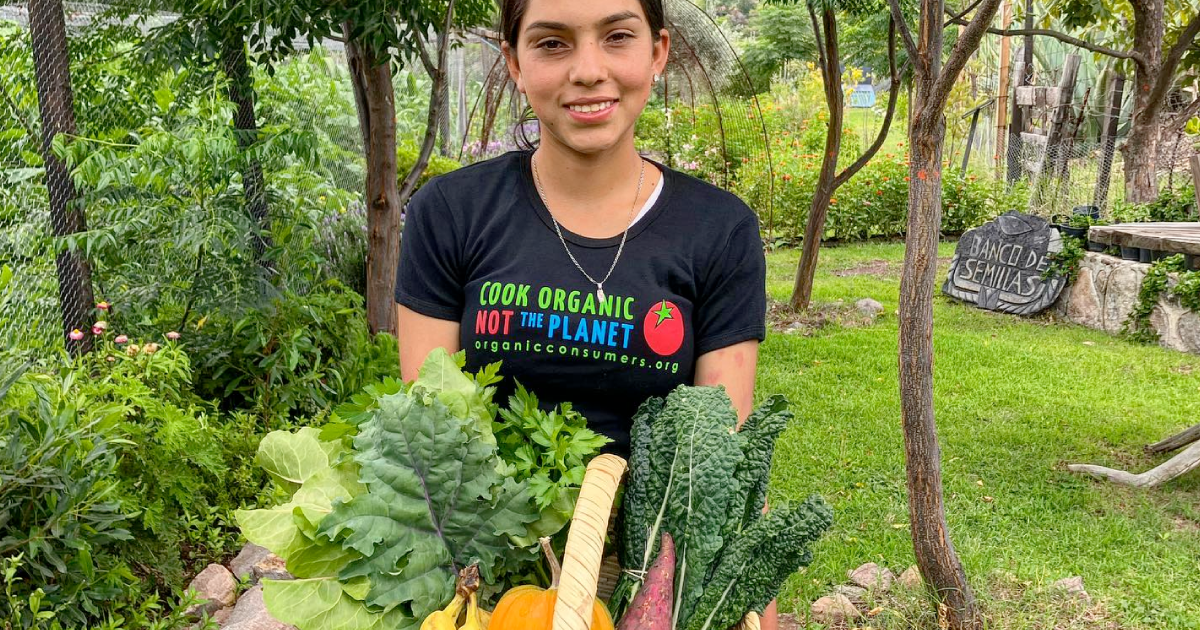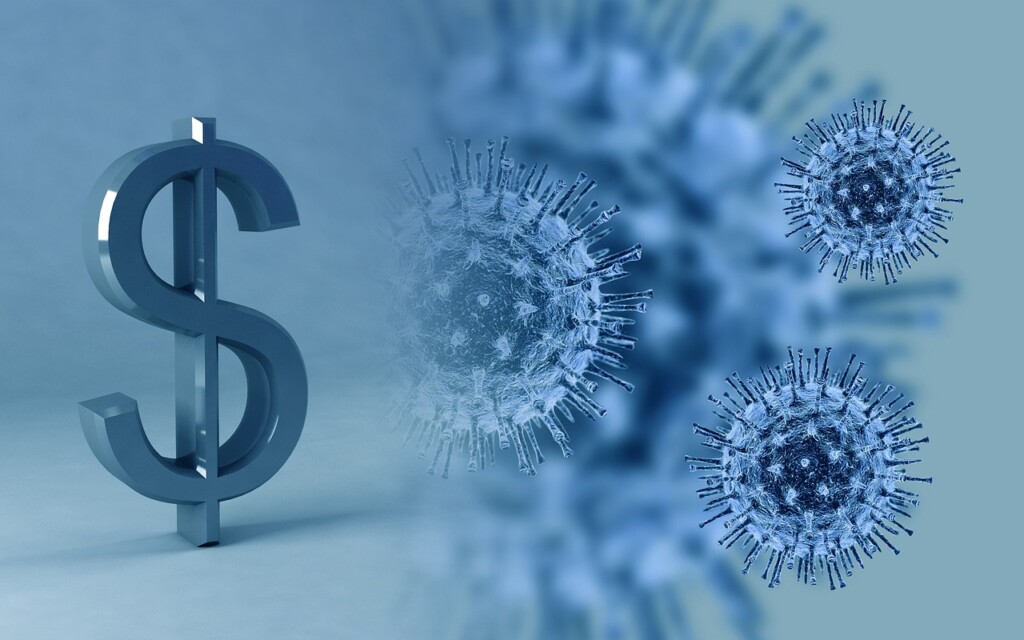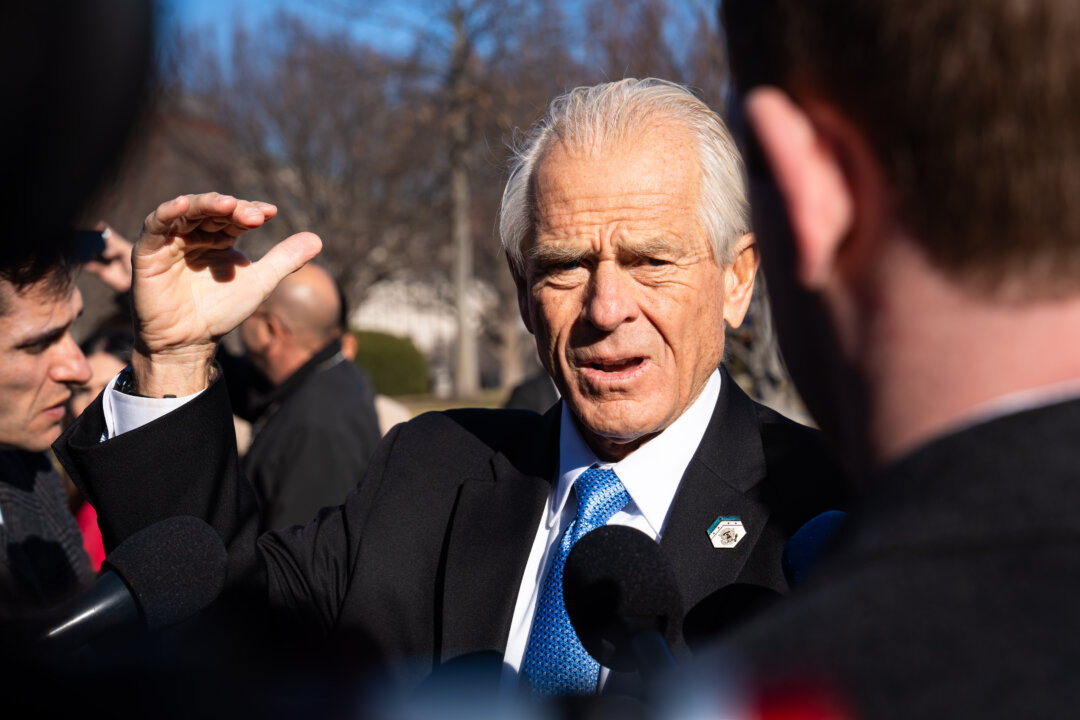
GENETIC ENGINEERING
Insecticide-Producing GMOs
Monsanto had two big ideas for how to “improve” crops with genetic engineering. The first was to make them impervious to herbicides. The second was to make them produce their own insecticides. With both, we’d eat more and more of its poisons with every bite.
These GMOs should have been subjected to rigorous, scientific safety reviews, but the Food & Drug Administration exempted them from the food additives law as “generally recognized as safe.”
In the U.K. the government had a slightly different approach. In 1995, after already releasing GMOs onto the market, it assigned industry-friendly academics to prove they were safe. It commissioned a study of GMOs engineered to express a natural insecticide known to be harmless to humans. They even cut the scientists in on a share of the profits.
Árpád Pusztai, Ph.D., was among them and he began his research believing he would prove that GMOs were safe. He fully expected the GMOs to control insects without harming eaters.
He was shocked by the results of his rat feeding studies. Somehow the gene product was safe when sprinkled on food, but it was toxic when expressed by the genetically engineered potatoes, even when expressed at a lower level than in the control diet.
Dr. Pusztai was brave enough to tell the truth. He went on British TV with a grave warning: “We are assured that: ‘This is absolutely safe. We can eat it all the time. We must eat it all the time. There is no conceivable harm which can come to us.’ But, as a scientist looking at it, actively working in the field, I find that it is very, very unfair to use our fellow citizens as guinea pigs. We have to find the guinea pigs in the laboratory.”
WATCH: A Moving Tribute to Dr. Arpad Pusztai by Jeffrey Smith of the Institute for Responsible Technology

ATTAINABLE SUSTAINABLE
Basic Prepping: Smart (and Panic-Free) Planning
Kris Bordessa (National Geographic, author) writes for Attainable Sustainable:
“I am not a Doomsday prepper in any sense. But I was raised in a manner that instilled the need to always be ready for just-in-case scenarios. Basic prepping like this isn’t panic inducing; instead, knowing that you’ll be mostly okay if there’s an unexpected job loss or natural calamity eases the mind! We never know when we’ll face disaster or upheaval, whether on a global scale or a household scale, but we can always improve how our household is equipped to handle what may come, even if we’re just dealing with unexpected power outages.
It’s probably time to shift back to cooking with ingredients rather than depending on some of our favorite ready-made options. This is easier on a tight budget and pantry staples like dry beans and rice can be stored for years.
Instead of buying a ready-to-eat vegan burrito bowl from the frozen food section, you’re going to make that burrito bowl from scratch. Instead of hoping that there’s a loaf of bread on the shelf, you’re going to learn to make your own.”

TAKE ACTION
Ban Insecticide-Producing GMOs
If Health & Human Services Secretary Robert F. Kennedy is serious about his campaign to Make America Healthy Again, this will mean insecticide-producing GMOs finally get safety tested—and taken off the market.
Earlier Food & Drug Administrations slipped GMOs into the food supply under a 1992 policy to exempt GMOs from the law by declaring them “generally recognized as safe.”
The harm Monsanto has done to human health with its insecticide-producing crops is all the more diabolical now that we know that it’s been a disaster for farmers, too.
Just as the weeds developed resistance to Roundup, pests became immune to the insecticide crops. By 2020, the pest problem was so out of control and farmers were so desperate that the Trump Administration’s Environment Protection Agency proposed a national phase-out of all Bt corn and cotton varieties except for one, Syngenta’s Vip3A protein, which had yet to develop insect resistance.
This wouldn’t have helped make our food any safer. If we go by what Dr. Pusztai learned, we have to assume Syngenta’s GMO (now owned by ChemChina) is just as dangerous as Monsanto’s (now owned by Bayer), but at least farmers wouldn’t be paying top dollar for useless GMO seeds!
TAKE ACTION: Tell Sec. Kennedy: Safety-Test & Ban Insecticide-Producing GMOs!

MODERN AGRICULTURE
Fruits And Vegetables That Look Nothing Like They Used To
By Holly Riddle, The Takeout:
“When you walk through the produce aisle, you may come across just a few fruits or vegetables that aren’t entirely familiar. You may know what they are, but you might not know how to use them or even what far away place the chain shipped them in from. After all, if you live in the United States, it’s unlikely that your farm or orchard down the road is growing rambutan (different from lychee) or durian fruit. However, most of the fruits and veggies on display are pretty recognizable. The pyramids of apples, the crates of cabbages, and the piles of peaches all represent foods you probably became quickly familiar with as a child.
If, though, you were to travel back in time, sometimes even just a hundred years ago, you might find that the fruits and vegetables you thought you knew and loved are entirely unfamiliar. Over the decades and centuries, modern agriculture and cultivation have entirely changed the appearances of certain plants, making for heartier, bigger, better fruits and veggies. Here are some of the most common fruits and vegetables that currently look nothing at all like they used to.”

SUPPORT OCA & RI
URGENT: Help Us Stop Frankenfoods From Evading Scientific Scrutiny
For decades, corporations like Monsanto have exploited regulatory loopholes to flood our food supply with genetically engineered crops—without proper safety testing and with zero accountability. These pesticide-producing GMOs have been rubber-stamped by government agencies that serve corporate interests instead of public health.
Now, a rare opportunity for real reform is within reach—but we must act to make sure independent science, not corporate spin, shapes the future of our food.
The Organic Consumers Association (OCA) is leading the fight to expose the dangers of untested GMOs, demand rigorous, transparent oversight, and protect the integrity of organic food and farming.
We need your help—NOW. Our funding is URGENTLY needed at this critical turning point.
We count on you—our grassroots supporters—to power this fight. Every dollar goes directly toward campaigns, advocacy, and holding Big Ag accountable.
Together, we can stop Frankenfoods from taking over our food system—and build a future where health, transparency, and nature come first.
Make a tax-deductible donation to Organic Consumers Association, a 501(c)(3) nonprofit
Make a tax-deductible donation to Regeneration International, our international sister organization

FOOD & FARMING
As U.S. Agroforestry Grows, Federal Funding Freeze Leaves Farmers in the Lurch
Sarah Derouin writes for Mongabay:
“Agroforestry, the ancient agricultural system of integrating trees and shrubs with crops and livestock, has seen a revival in recent decades in the U.S. Around the country, agroforestry projects have sprung up, bolstered by federal grants like the Department of Agriculture’s Climate-Smart Commodities program. Federal agencies have also partnered with nonprofits to provide training and resources for farmers interested in diversifying their crops, bolstering their soil, and sequestering carbon.
From 2017 to 2022, the number of agroforestry projects increased by 6% nationwide. The efforts had a ripple effect, providing new opportunities for communities to strengthen their local economy and bolster food systems.
But on Jan. 27, 2025, the Trump administration issued an executive order to freeze federal funding over the next 90 days pending a review. This freeze included grants that went directly to agroforestry projects across the country. Reimbursement payments were halted for work already completed, pay was frozen, new hiring plans were canceled, and community services screeched to a stop.”
TAKE ACTION: Tell Congress to force Trump’s USDA to fulfill farmer contracts!

NEW RESEARCH
Your Best Defense Against Microplastics Might Already Be in Your Produce Drawer
Andi Breitowich, Food & Wine:
“If it seems like a weekly occurrence that a new microplastic-filled product is potentially harming your health, you’re right. Between tea bags, lipstick, dishwasher detergent, and gum (among many other things), it’s hard to avoid these tiny toxic particles. But there’s a glimmer of good news: a study published in the Journal of Pharmaceutical Analysis found that colorful fruits and vegetables may combat the negative effects of microplastics in the body.
Fruits and vegetables are known for their abundant vitamins and minerals, but the study examined how anthocyanins — natural compounds found in colorful fruits and vegetables — may protect the reproductive systems from microplastic damage. Specifically, researchers explored how anthocyanins interact with steroid receptors (protein molecules within a cell that bind to hormones such as estrogen, progesterone, and testosterone) which play essential roles in reproductive health, says Angelo Falcone, MD, an integrative medicine physician and founder of Dignity Integrative Health and Wellness. “This isn’t an original research study with experiments, but rather a comprehensive review of existing literature because the study authors looked at how microplastics disrupt our endocrine system and harm reproductive health, then assessed how anthocyanins might counteract these effects through their antioxidant and anti-inflammatory properties.’”

SWEET AND DEADLY
New Book: How Coca-Cola Spreads Disinformation and Makes Us Sick
By Patrick Long, TCD:
“It’s common knowledge that soda is packed with sugar and associated with several serious health conditions, like diabetes and cancer. So, how does Coca-Cola, the No. 1 soft drink company on the planet, maintain a great reputation?
A new book by author and journalist Murray Carpenter explores this phenomenon and reveals the dark reasons behind it.
Carpenter’s book, ‘Sweet and Deadly: How Coca-Cola Spreads Disinformation and Makes Us Sick,’ details the lengths the Coca-Cola Company has gone to mislead the public about the safety of its products.
One of Coke’s underhanded tactics involved funding organizations like the Sugar Research Foundation and the Global Energy Balance Network to spin food science in its favor. The former was a nefarious but highly effective PR move that began in 1943. It was the basis for similar tobacco PR campaigns that followed in the 1950s.”
Learn about how Coke steals water from the drought-stricken area daily and much more

HEALTHY LIVING
Red Flags To Know About Pillows To Avoid Common Toxins
By Sophia Beams, House Digest:
“Is it time to replace your bedding? Shopping around for a good pillow is just as essential as finding the perfect mattress — and not just in terms of comfort, either. One of the biggest mistakes people make when buying pillows is not checking to see whether it’s free of toxins.
There’s a lot more hiding from you in your average pillow than you might think. Inorganic materials such as polyester and memory foam can release chemicals into the air over time, irritating your skin and lungs — not to mention the fact that they aren’t biodegradable either, which is a serious problem when you think about how often you should be changing out your pillows. Even natural materials like cotton, when grown with fertilizers and pesticides, carry these chemicals from where they were planted all the way into your very own pillow. Thinking that duck or goose-down pillows are the best option? Bad news — these feathers are often chemically treated before they make their way into your pillow stuffing. Even down alternatives fall victim to their already vague name because they’re often filled with a variety of potentially hazardous materials, too.
All of these pillow facts might be downright making you lose sleep. But don’t lose hope just yet — instead, let’s talk about the best way to shop for non-toxic pillows.”

SUSTAINABLE LIVING
The OCA’s Weekly 3
OCA’s Weekly 3 offers three simple, impactful actions each week to drive change in environmental policy, sustainable agriculture, and personal health. These actions are designed to raise awareness, influence decision-makers, and create lasting change. We’ve already seen significant victories, but real change happens through collective action. By committing to just three actions each week, you become part of a movement for a healthier planet and a more just food system. Together, we can make an even bigger difference!
1. Take Action: Save Local, Regenerative & Organic!
Join us in calling for immediate action to urge the U.S. Department of Agriculture (USDA) to release $2.3 billion in withheld payments owed to over 30,000 local, regenerative, and organic farmers. While industrial agriculture has recently received an additional $10 billion, these sustainable farmers are left without crucial support. By participating in this campaign, you can help ensure the USDA honors its commitments, promoting regenerative agriculture practices that enhance soil health, combat climate change, and reduce public exposure to harmful pesticides.
Your voice can make a significant impact in advocating for equitable funding and a healthier food system.
2. Personal Health: Ditch the Fake Meat!
Replacing fake meat products with whole, minimally processed plant-based foods into your diet may offer mental health benefits and support overall well-being. A study by the University of Surrey, as reported by Newsweek, found that vegetarians consuming ultra-processed plant-based meat alternatives—such as vegetarian burgers, sausages, and nuggets—were 42% more likely to experience depression compared to those who consumed whole food proteins like chickpeas, eggs, beans, lentils, and quinoa. The study also noted that this increased depression risk was not associated with higher intake of salt, sugar, or saturated fat, suggesting other factors related to ultra-processed foods may contribute to this mental health outcome.
3. Environment: Shop Regenerative Organic!
By opting for products from farms that prioritize these sustainable practices, you contribute to healthier soils and a reduction in atmospheric carbon emissions. Making informed choices at the grocery store supports farming methods that promote environmental sustainability and combat climate change.
Learn more about how soil and regenerative farming impact climate change

LITTLE BYTES
Other Essential Reading and Videos for the Week
Parks Are Being Dismantled Before Our Very Eyes
9 Detox Foods Naturopaths and Nutritionists Swear By For Spring
Music, Memory, and Alzheimer’s Disease: The Fascinating Link
Bayer’s Effort to Block Roundup Lawsuits Kicks Into High Gear
7 Reasons a Red Creeping Thyme Lawn Is 1000X Better Than Any Other Upgrade for Your Yard This Summer
The Citrus-Smelling Shrub That’s Heat-Tolerant And Pollinators Love
National Park Service Removes References to Harriet Tubman From ‘Underground Railroad’ Webpage
Neuroscientists Say High Doses Of These 3 Supplements Could ‘Hurt Your Brain’
Chia Seeds vs. Flax Seeds: Which Superfood Is Healthier?
18 Easy Grass Alternatives for Your Lawn
It Doesn’t Take Much for Microplastics to Leach Into Food, Researchers Warn
Indigenous Wisdom, Spiritual Ecology & Regenerative Agriculture Can Heal Our World
Minnesota Bill Targets Toxins in Tampons After Researchers Detect Metals in Menstrual Products
The post Organic Bytes Newsletter #890: GMOs: We Eat More Poisons With Every Bite appeared first on Organic Consumers.
.png)




















 English (US)
English (US)